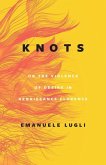"This short book offers a dazzling new interpretation of Paul Klee's most famous work: his Angelus Novus (1920), which was purchased by Walter Benjamin and became the model for his Angel of History, a figure saturated with Jewish mysticism that he introduces in his "Theses on the Philosophy of History." In 2014 the celebrated American artist R. H. Quaytman made a surprising discovery about Klee's work when she examined it at the Jewish Museum in Israel. She realized that Klee had carefully pasted the Angelus down over another image, a face, leaving just a finger's breadth of it showing. Through forensic science and lots of sleuthing it was determined that face belonged to Martin Luther. Behind the Angel of History tells the story of how Quaytman solved the mystery of who lurks behind Klee's angel. It then plunges into questions about why a face long hidden beneath another picture might matter. The book travels through a tangle of loaded conversations among images-from Klee's Angelus to Benjamin's own drawing of a crucified angel, from Klee's Angelus to Quaytman's own layered panels meditating on its secret"--








